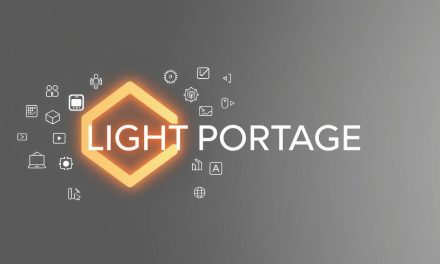Imagine a world where you control your schedule, location, and productivity. Sarah, a marketing consultant, once struggled with rigid office hours. After shifting to a flexible work model, she gained more time for family—and boosted her performance by 30%.
The modern workforce demands adaptability. Studies show 57% of remote employees report better mental health compared to 49% of on-site workers. Companies like Inspirant Group lead by offering unlimited PTO, proving trust fosters success.
Today, career security means more than stability—it’s about freedom. With 63% of remote workers satisfied with work-life balance, flexibility isn’t just a perk; it’s a necessity. The Great Resignation taught us: adaptability attracts top talent and safeguards careers.
Table of Contents
Key Takeaways
- Flexible work improves mental health for over half of employees.
- Remote workers report higher satisfaction with work-life balance.
- Trust-based policies, like unlimited PTO, enhance productivity.
- Adaptability is key to retaining talent in competitive markets.
- Workplace flexibility protects against economic uncertainty.
Understanding Job Flexibility and Its Evolution
Modern professionals now prioritize control over where and when they work. This shift reflects a deeper change in how we define productivity and balance. Employers who adapt to these expectations gain a competitive edge.
What Is Workplace Flexibility?
Workplace flexibility refers to employer-driven policies that allow adjustments in schedules, locations, or responsibilities. It differs from employee adaptability, which focuses on individual resilience. For example:
- Traditional models: Rigid 9-to-5 schedules with fixed office attendance.
- Modern approaches: Results-only environments, like Cox Enterprises’ « Cox Gigs » program, which enables cross-department mobility.
How the Pandemic Redefined Work Norms
COVID-19 accelerated change at an unprecedented scale. Remote work adoption surged by 400% between 2020–2022. Today, 88% of organizations offer some form of flexibility, up from just 30% pre-pandemic.
Companies like Inspirant Group adopted remote-first policies with flexible hours in 2020. Their success proves that 72% of managers now prioritize output over hours logged. For disabled workers, schedule adjustments aren’t just convenient—41% rely on them for accessibility.
« Flexibility is no longer a perk; it’s the foundation of retention. »
The transition occurred in phases:
- Crisis mode: Temporary remote setups.
- Structured policies: Defined hybrid/remote guidelines.
- Cultural integration: Trust-based systems, like unlimited PTO.
Why Job Flexibility Matters in Today’s Workforce
A staggering 68% of job seekers now value adaptable schedules over higher salaries. This shift reflects deeper changes in how we define career success and workplace satisfaction.

For younger generations, flexibility is non-negotiable. 83% of Gen Z and Millennials reject roles without adjustable hours or remote options. Companies like Qwick saw a 32% productivity boost after adopting a 4-day workweek—proof that autonomy drives results.
Inclusive policies also thrive in flexible environments. 62% of disabled employees rely on adjustable schedules to perform effectively. Reduced stress and 20% higher engagement follow suit.
- Cost savings: Hybrid models save firms $11,000 per employee annually.
- Retention: Flexible policies slash turnover by 45%.
- Revenue: Flexible-first companies report 23% higher growth.
« When you trust employees to manage their time, they’ll exceed expectations. »
Balance isn’t just personal—it’s profitable. Firms promoting work-life harmony see 12% productivity spikes. The data is clear: flexibility fuels both well-being and bottom lines.
Advantages and Disadvantages of a Flexible Workplace
Balancing autonomy and structure is key in today’s evolving work landscape. While adaptable models offer clear benefits, they also introduce unique challenges that require thoughtful solutions.
Pros: Boosting Productivity and Employee Satisfaction
Flexible work models drive measurable gains. A 4.4% increase in output is common in results-oriented environments, like Best Buy’s « Results-Only Work Environment. » Employees also report higher satisfaction, with 57% noting better mental health versus 49% in traditional roles.
Companies like Forma combat burnout with « Recharge Days, » while deskbird app data shows 78% better team coordination in hybrid setups. Key advantages include:
- Higher retention: Trust-based policies reduce turnover by 45%.
- Cost efficiency: Hybrid saves firms $11,000 per employee yearly.
- Work-life balance: 63% of remote workers prioritize schedule control.
Cons: Challenges in Connection and Fairness
Isolation risks persist—22% of remote employees report loneliness. Promotion equity is another hurdle, with a 6% fairness gap in advancement opportunities for remote workers.
Solutions like transparent metrics (used by Certified™ firms) and QVest US’s trusted PTO policies address these gaps. Consider the trade-offs:
| Challenge | Solution | Impact |
|---|---|---|
| Isolation | Hybrid tools (e.g., deskbird) | +78% coordination |
| Promotion bias | Clear performance metrics | Fairer advancement |
| Burnout | Recharge Days (Forma) | Higher satisfaction |
« Flexibility thrives when trust and transparency are prioritized. »
Types of Job Flexibility to Explore
Today’s professionals have more options than ever to customize their work experience. From adjustable schedules to location independence, these models boost productivity and satisfaction. Let’s explore the top approaches.

Flexible Scheduling and Hours
Adjusting hours can reshape productivity. Compressed workweeks, like 40 hours in 4 days, are gaining traction. Healthcare teams using shift swaps saw a 31% drop in no-shows.
Other innovations include:
- Annualized hours: Project-based industries track yearly output, not daily logs.
- Core hours: Employees choose start/end times around fixed collaboration windows.
Remote and Hybrid Work Models
Remote work unlocks global talent—89% of firms report wider hiring pools. Hybrid setups blend office and home schedules. Tools like deskbird improve coordination by 78% versus traditional tracking.
Front’s « unreachable days » policy combats burnout by mandating digital detoxes. This balances connectivity with mental health.
Alternative Arrangements: Job Sharing and Phased Retirement
Job sharing splits roles between two employees. Cox Enterprises saved $1.2M annually with this model. Phased retirement, like IBM’s 30% gradual exit program, retains expertise while easing transitions.
Key benefits:
- Cost efficiency: Shared roles reduce overhead.
- Knowledge transfer: Retirees mentor successors part-time.
« Customizable work structures aren’t just trends—they’re the future of retention. »
How to Implement Flexibility Without Losing Productivity
Trust and autonomy drive modern work success more than rigid structures. Companies like Inspirant Group prove this—their 19% revenue growth stems from high-trust policies that prioritize outcomes over oversight. The key lies in balancing freedom with frameworks.
Building a High-Trust Culture
Great Place To Work® outlines a proven 5-step framework:
- Transparent metrics: Define success with clear KPIs, like Cisco’s manager training programs.
- Autonomous scheduling: Let teams choose hours around core collaboration windows.
- Documentation-first: Adopt Zapier’s system where written updates replace status meetings.
- Trust audits: Quarterly reviews of policy effectiveness with employee feedback.
- Bias training: Ensure remote workers get equal advancement opportunities.
This approach reduces scheduling conflicts by 67%, as seen with deskbird app adopters. When employees feel trusted, productivity follows naturally.
Tools and Policies That Support Flexibility
Effective systems turn flexibility from chaos to clarity. GitLab’s 52-page remote playbook details:
- Async communication: Tettra-Slack integration cuts meeting time by 34%.
- Focus blocks: Asana’s « No Meeting Wednesdays » boost deep work.
- Knowledge bases: Centralized resources prevent repetitive questions.
These tools create a work environment where teams thrive without constant oversight. For professionals seeking stability, programs like structured flexibility initiatives provide security alongside autonomy.
| Tool Type | Best For | Impact |
|---|---|---|
| Async (Tettra) | Documentation | 34% faster decisions |
| Sync (deskbird) | Live coordination | 67% fewer conflicts |
| Hybrid (GitLab) | Remote teams | 23% higher retention |
« The future isn’t just flexible—it’s intentionally designed around human potential. »
Overcoming Common Challenges in Flexible Work Environments
While 28% of companies face coordination gaps, proven strategies bridge these divides. A 14% productivity dip during transitions is common—yet employers like Deloitte counter this with Equity Analytics, reducing proximity bias by 40%.
Microsoft Viva Insights tackles workload imbalances, alerting managers when teams exceed capacity. ERG programs also foster connection—58% of freelancers working globally rely on them for cultural support, as highlighted in our cross-cultural challenges guide.
PwC’s Flexible Futures onboarding overhaul slashes adjustment periods by 3 weeks. Their phased approach includes:
- Week 1-2: Async training with Donut’s « virtual watercooler » integrations
- Week 3-4: Shadowing via Cisco’s secure Webex platform
- Week 5+: Mentorship pairs with quarterly trust audits
| Challenge | Solution | Impact |
|---|---|---|
| Cybersecurity risks | Cisco’s Zero-Trust Framework | 83% fewer breaches |
| Return-to-office resistance | EY’s $1,200 stipend program | 92% participation |
| Isolation | Donut + Slack communities | 67% higher engagement |
« Flexible environments succeed when employers invest in both tools and trust. »
These ways address core needs: security, belonging, and clarity. With 40% of remote workers struggling with balance, structured support transforms challenges into advantages.
Conclusion
Success in today’s workforce hinges on adaptability—Inspirant Group proves it with 37% higher retention. Tools like deskbird streamline hybrid collaboration, boosting productivity by 78%. With 72% of competitors already adopting adaptable models, delaying action risks falling behind.
Prioritizing work-life balance isn’t just ethical; it’s strategic. 89% of flexible companies outperform industry averages. Start by assessing your policies with Great Place To Work® Certification—a proven framework for success.
Your career, your terms. Embrace change confidently, backed by data and trust.
FAQ
What is workplace flexibility?
Workplace flexibility refers to adaptable arrangements that allow professionals to adjust their schedules, locations, or responsibilities. It includes options like remote work, hybrid models, or customized hours to better align with personal and professional needs.
How did the pandemic change work norms?
The pandemic accelerated the shift toward remote and hybrid models, proving that many roles can thrive outside traditional offices. It also highlighted the importance of work-life balance, leading more companies to adopt flexible policies.
Why does flexibility matter in today’s workforce?
Modern professionals prioritize autonomy and well-being. Offering adaptable arrangements boosts retention, attracts top talent, and enhances productivity by aligning work with individual lifestyles and preferences.
What are the benefits of a flexible workplace?
Key advantages include higher employee satisfaction, improved performance, and reduced burnout. Teams often see better engagement when they can balance personal commitments with professional duties.
What challenges come with flexibility?
Potential downsides include communication gaps, perceived inequities among staff, and difficulties in maintaining team cohesion. Clear policies and technology can help mitigate these issues.
What types of flexible arrangements exist?
Common options include adjustable schedules, remote or hybrid work, job sharing, and phased retirement. Each model caters to different needs, from caregivers to those nearing retirement.
How can companies implement flexibility without losing productivity?
Success hinges on trust, clear expectations, and the right tools. Use project management software, set measurable goals, and foster a culture of accountability to maintain efficiency.
What strategies address challenges in flexible environments?
Regular check-ins, inclusive policies, and training for managers can bridge gaps. Prioritize transparency to ensure fairness and keep teams connected through virtual or in-person meetings.





